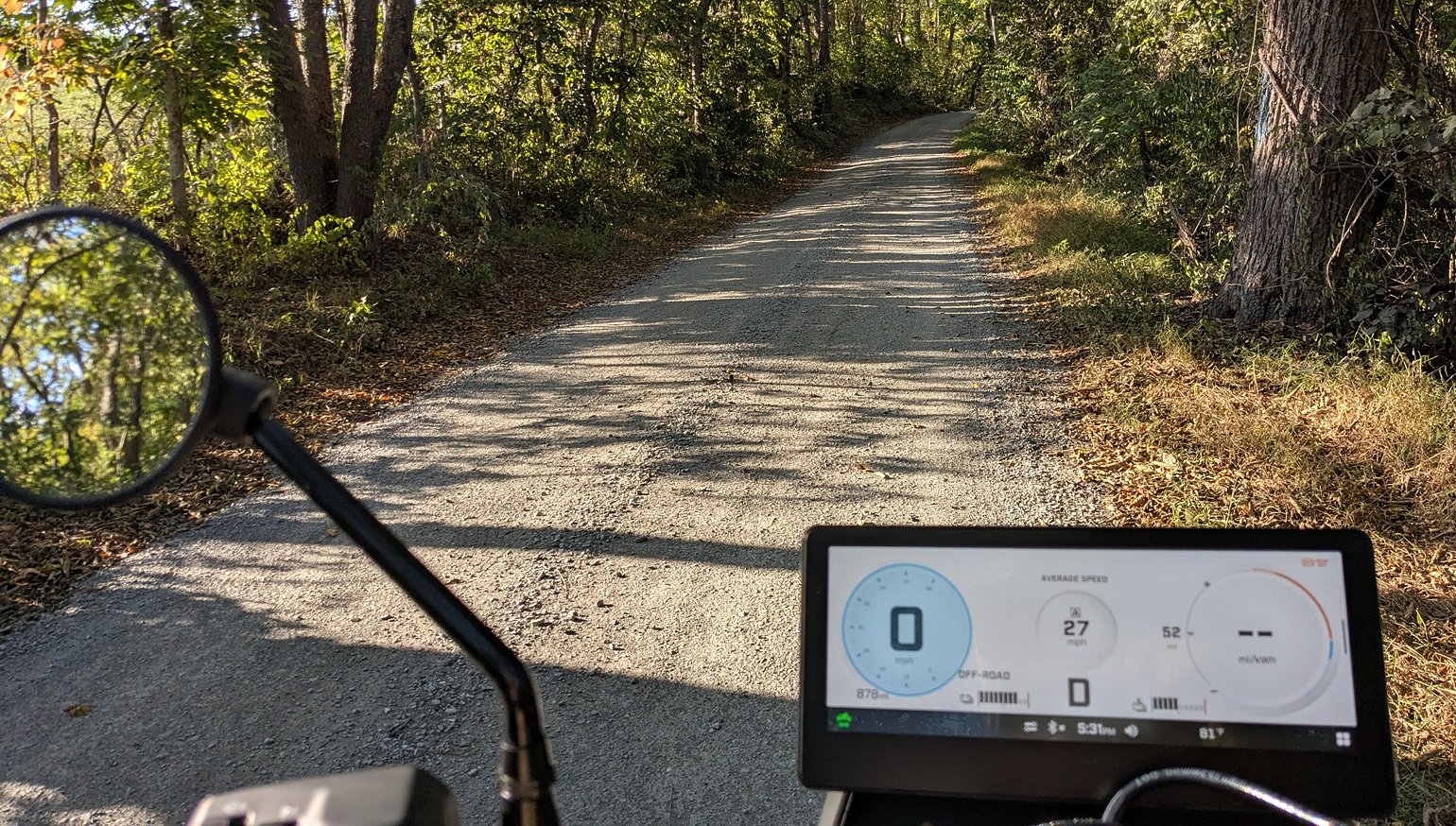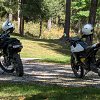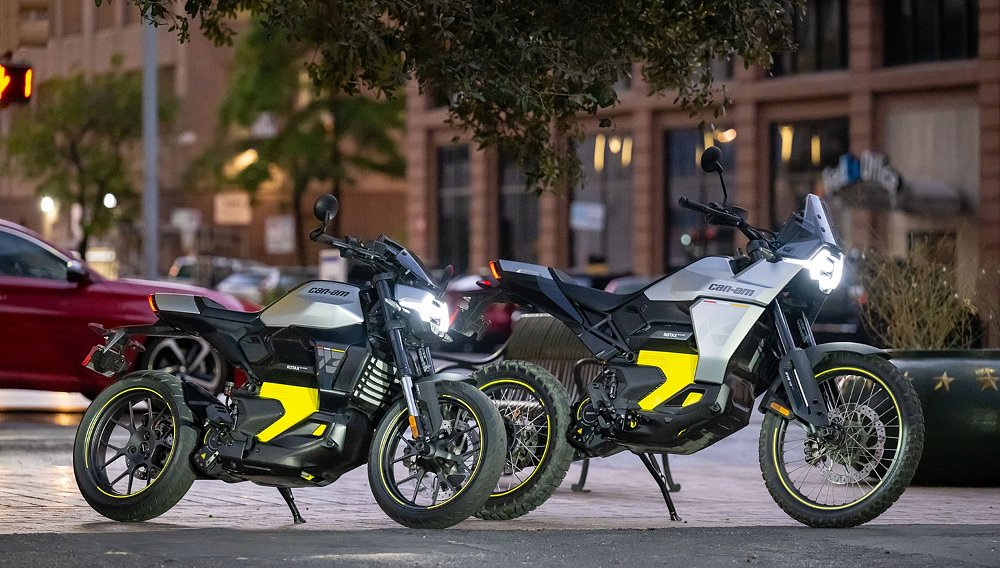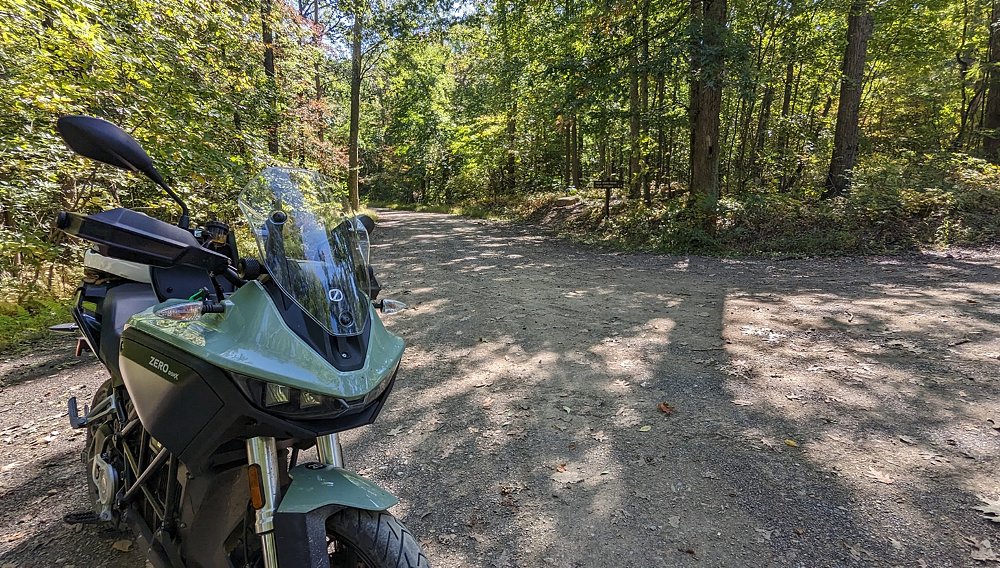Someone in Valcourt, Quebec has a long memory.
In 1975, Can-Am built a motocross motorcycle that, for a brief period in time, was the single fastest off-road bike anyone had ever sold. The MX-2 250 was a fire-breathing, Rotax-engined, two-stroke, and it put new motorcycle company Can-Am on the map.
Can-Am's competitors, having been thoroughly smoked, got more determined, and over several years, managed to erase the performance deficit in which they found themselves.
That early success of Can-Am's off-road motorcycles was never repeated. Sales fell and suddenly motorcycles didn't look like that great of a business to be in. The last Can-Am motorcycle was built in 1987. Since then, the company has done well making ATVs, side-by-sides, and the Spyder, Ryker, and Canyon lines of three-wheelers. But no motorcycles.
That is, until now.
The Can-Am Origin dual-sport — along with its cousin, the street-going Pulse — is a new, electric motorcycle. It is a clean-sheet-of-paper design that tackles both the eternal set of motorcycle design problems and the new set of electric propulsion problems in new and effective ways. And in doing that, Can-Am has somehow managed to capture an echo of that historic go-fast DNA in a whole new kind of hardware. Back in the fall of last year, Marc Cook did a stellar job of describing the design and execution of the Origin and its more street-focused cousin, the Pulse. With a liquid-cooled electric drivetrain, 8.9 kWh battery, a Rotax e-Power motor making 47 horsepower, a unique integrated sealed-chain case and single-sided swingarm, and off-road-optimized long-travel KYB suspension, spoked rims and Dunlop D605 knobbies, he only had one big question remaining, which was how the Origin could really be used — in light of its battery's range — for the type of off-road riding for which it had clearly been designed. How far could a charged battery take you? How long would it take to recharge? Could it be… fun?
And there's only one way to answer those questions: Escape the confines of the curated motorcycle press introduction, take the bike out in the real world, and put on some miles.
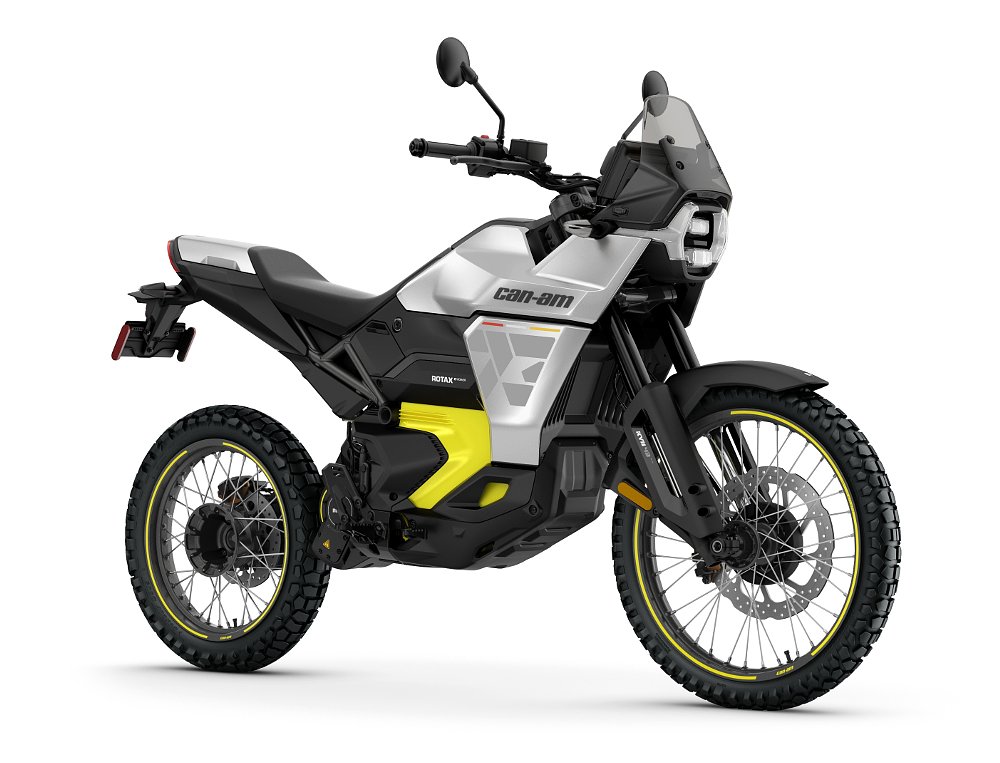
Can you ride all weekend on an electric motorcycle?
I've spent enough time with electric motorcycles that I have learned what not to do. "Testing to destruction" — or, in the electric motorcycle equivalent, a dead battery — might be fun one time, but it really isn't something I recommend repeating. So one learns to do a little route math before departing. One also learns that range estimates displayed by the instruments are dynamic, best estimates based on one's riding dynamics up to that point in time. One also learns that absolute road speed and acceleration are both fun and the enemies of actually arriving at somewhere distant. An estimated "Range Remaining" of 40 miles on a ride that has averaged 45 miles an hour won't make 25 miles if one suddenly accelerates to 65 miles an hour. And once you've internalized all those things, it can't hurt to have the bike's charger in one's backpack. Just in case.
During the initial shakedown miles on the Origin, I rode a mixture of agricultural and rural unpaved roads, and the bike proved as quickly accessible as it was capable. Like most electric motorcycles, the instant control of both drive and regenerative torque makes very precise control possible. The long-travel suspension and the Dunlop dual-sport tires' grip are more than adequate on these gravel roads. Ergonomics are wide open — a straight-up-and-down dirt bike riding position — although to ride tougher stuff standing up you'll need to seek a bar riser as the handlebar is too low for comfortable stand-up riding.
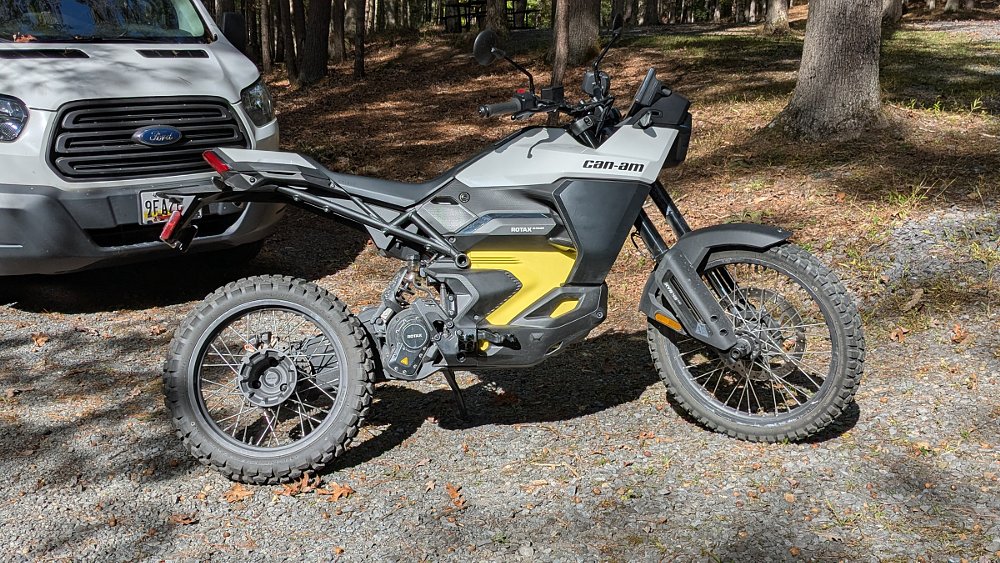
To really see how capable the Origin was, we set up a base camp in Pennsylvania's Caledonia State Park, 50 backroad miles from home, and sitting in the center of the Michaux State Forest, with hundreds of miles of forest service roads and trails. Getting to the start point was a matter of some delicacy. The Can-Am spec sheet lists a standard test protocol called the World Motorcycle Test Cycle (WMTC) that indicates that the Origin will run 71 miles to empty in the simulated use test that combines a mix of acceleration and regen. A highway range estimate, though, indicates 52 miles at sustained highway speeds. Given that highway speeds are really not advised if one is trying to stretch the Origin's range, I lied to Google Maps — telling it I was riding a bicycle — which resulted in a route that provided a fantastic mix of single-laners that snaked through two counties on the most remote and untraveled roads around. This little white AI-lie put me on some new and wonderful roads, while giving me a route whose speed and mileage stats enhanced my chances of arriving with the charge I was carrying onboard. Since I wasn't in possession of any kind of range baseline, I started out being fairly conservative with my throttle usage. Once the real-world data made it clear I would get to my destination with plenty of buffer to spare, I relaxed a bit and became a bit more demonstrative with acceleration. On these tight, technical roads, the Origin was an agile, responsive dance partner.
After 50 miles of mostly single-lane road in the green tunnels of forest, running at speeds between 30 and 50 mph and with lots of opportunities for regenning down hills, I arrived at the campground with almost 30 miles of range showing remaining on the bike's instruments — a heartening real-world test of point-to-point range that helped me to stuff range anxiety to the back of my mind. Again, I want to thank Pennsylvania's Department of Conservation and Natural Resources (DCNR), whose bathhouse facilities have lots of outside electrical outlets, and where no one ever seems to blink at the sight of a motorcycle plugged into one. Four and a half hours at the bathhouse were enough to regain full charge at Level 1 charging speeds.
Morning on that mountain brought a hot cup of coffee and the arrival of Triumph Paul, my riding buddy and enthusiastic rider of a Suzuki DR-Z400S. Paul rides Michaux as often as he can, so in addition to being a great ride buddy and off-road guy to go to school on, he comes complete with set of mapping track files for his favorite forest loops. After reviewing some of Paul's loop options, we selected one whose duration was consistent with the Origin's range, keeping in mind that our ride was unlikely to be as "throttle averse" as my ride up to the park.
And "throttle averse" it definitely wasn't. Early in the day, I was still getting a feel for the Origin's traction and steering manners, which, to be fair, are as good as any off-road bike I've ever ridden. The overwhelming impression one gets is that — in the speed range where it will most often be ridden off-road, say between 20 and 45 mph — the Origin is the very definition of quick. Power comes on instantly, making it the easiest bike ever on which to set an off-pavement slide. Anywhere off the center of the back tire, initiate a turn and roll the throttle and you're looking like a Grand National pro. On corner exits one can turn the-thing-which-not-technically-a-throttle and it's like the Millennium Falcon into Hyperspace thing. Speed materializes instantly and, as someone who is not as skilled, or perhaps as brave, as Paul, one can resort to the chump's retort: One might not be as fast in the corners but one can certainly reel in your buddy on the "e-gas." The suspension also contributes to the sensation that one can do no wrong. I've always been a tad paranoid about major ruts on the trail, but 10 inches of taut KYB suspension and proper off-road tires basically makes them disappear.

After about two and a half hours of riding, we stopped for a lovely lunch break in the Old Forge State Forest Picnic Grounds. After lunch, I was no longer figuring the Origin out, and was no longer needing to follow Paul by the cloud of dust his DR-Z traditionally leaves. I was keeping him in sight as we blasted down the stream-side dual-track roller coasters that he prefers. Only on the last mile or two before basecamp, as we skirted a working commercial sandpit mine, leaving the road leading away covered in several inches of fine powder sand, did any of my old traction anxiety return. That anxiety was quickly dispatched on the return to camp by a comfy camp chair and a cold beverage that put punctuation on a great riding day.
We'd ridden for four hours or so, and covered just under 50 off-macadam miles. It had been a spirited ride, and my arms and shoulders were sending me signs that I'd made full use of some muscles that had been formerly pretty unstressed. The Origin came back to camp with 35% state of charge remaining and was able to be fully recharged on a Level 1 charger in just over four hours.
With Paul back at home, Saturday was a solo exploration day. After some time with my Michaux Purple Lizard paper map, I found a loop that looked like it would offer spectacular riding terrain and views from the top of the ridge that is the backbone of the park.
I love it when I'm right.
I spent a few miles on twisty pavement heading towards my entry into the backcountry. The silence and twisty-road groove made possible by the Origin's direct drive and regen put me in a perfectly focused place for the riding to come. Soon enough, Old Railroad Road came up, and I began the climb back up the mountain. I still don't get why Old Railroad Road is named that as it's impossible to build a railroad in this kind of nearly vertical terrain, and I didn't see one anywhere, but climbing the mountain on a series of switchbacks and straights which hung off the side of the ridge was a spectacular bit of riding. The condition of the trail was exemplary — new, well-graded gravel all the way. It was more than sufficient to fully fire up a mature sense of false security.
That sense of security evaporated as soon as I hit the top of the ridgeline and made the left onto Piney Mountain Ridge Road. According to Purple Lizard, Piney Mountain is technically an "Administrative Service Road," a route reserved for the State Forest and Gameland's Rangers and support teams. One can tell this is true because all of the intersections have yellow steel gates that can be closed when conditions warrant. On a sunny, 73-degree day though, all the gates were open, and it was time to rip south down the entire backbone of the northern portion of Michaux.
Unlike the roads at the lower elevations, Piney Mountain's riding surface was largely comprised of bedrock and large stones, a real workout for both the Origin's KYB suspension and the rider. Riding in a standing, bent-kneed crouch — due to the low handlebar — gave the Origin's rear suspension the opportunity to move around underneath the rider. Anyway, the bike's saddle — which conforms to dirt-bike-nominal, being only a hunk of high-density foam — was one that I was never that fond of, anyway.
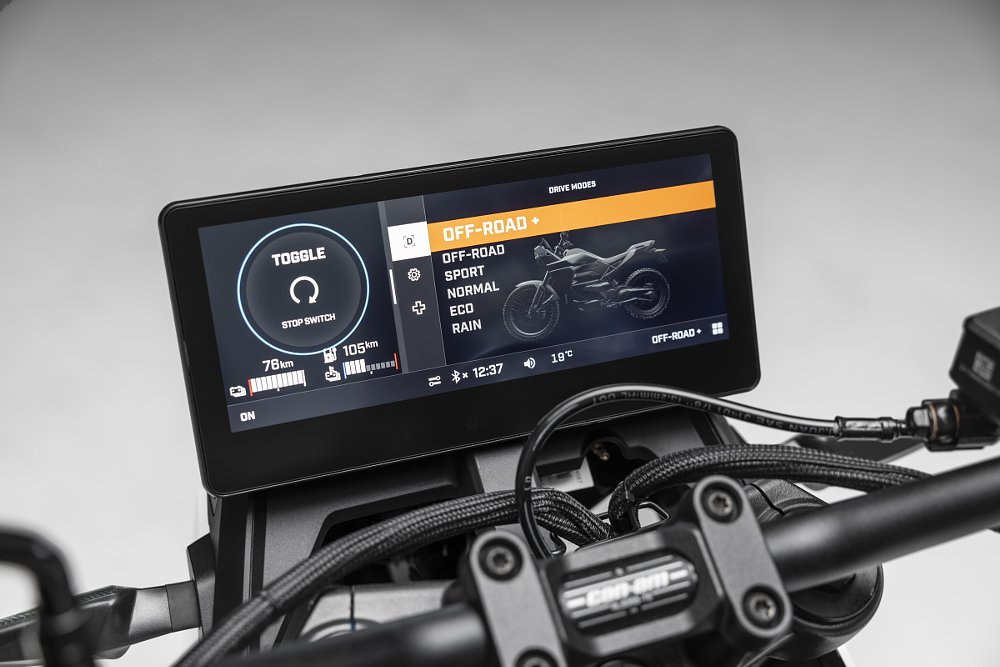
So, for the next 25 miles or so, I kept my speeds up and let the suspension do its job. I even occasionally was able to catch views of the valleys on either side of the mountain, without being too concerned about the bike's behavior. Given the beating being delivered at the contact patches, the Origin never put a wheel out of place.
Again, after just under 50 miles of spirited flogging, and with the rider glowing and mostly used up, the Origin returned to camp with 38% charge remaining, enough to be back on the campsite fully charged before the sun set. On Sunday, I explored 53 miles of over-hill-and-dale pavement riding back home — again, a wonderful, focused riding experience, except for a slight backtrack when my "lied-to" mapping program tried to take my "bicycle" over a few miles of the Appalachian Trail. All up, it was four days and more than 200 miles of great on- and off-road riding, the Origin spent zero time in a pickup truck or trailer, and the rider spent no time wishing for more saddle time than the spirited rides each day provided.
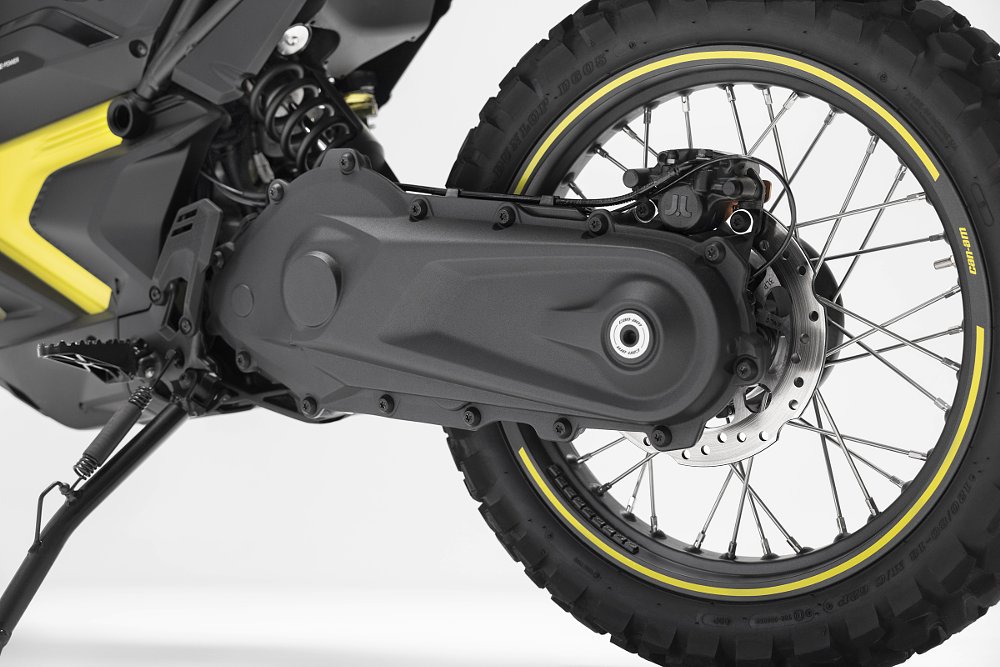
So what is the Origin, really?
The Origin is not a competition motorcycle — you're not going to run it in the Hare Scrambles — and unless you're really beyond average stubborn and determined, it's not a point-to-point adventure machine, or even an Interstate cruiser, as it's just too range-constrained for that. I keep coming back to the fact that the bike is just plain fun to ride, and manages to seem crazy-quick in a way that the stopwatch might not confirm. With an all-up weight of 412 pounds and 47 horsepower, the Origin is responsive in a way that most off-roaders can't duplicate. Power is always there for the asking, at any speed.
I can't help but think that Can-Am was laser-focused on optimizing the riding experience and used the biggest battery they could without the extra mass gelding the experience of riding the thing. If you're looking for an around-town commuter that laughs at potholes, or a backroads scratcher that really comes into its own when the pavement ends, the Origin might be for you. Not everyone is as lucky as I am, with the Mid Atlantic Backcountry Discovery Route running within seven miles of my front door, but if you do live close to the dirt and gravel, or have a truck to get you and your bike there, the Origin might be the easiest play bike to live with ever made. No oil changes, no valve adjustments — it's literally just turn the key and go.
I was sad to see it go back on the truck, but can’t wait to see what Can-Am does next with their new electric platform.




